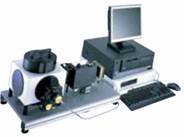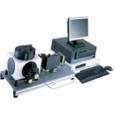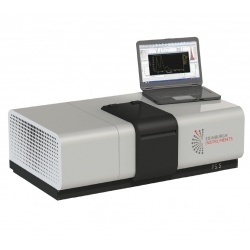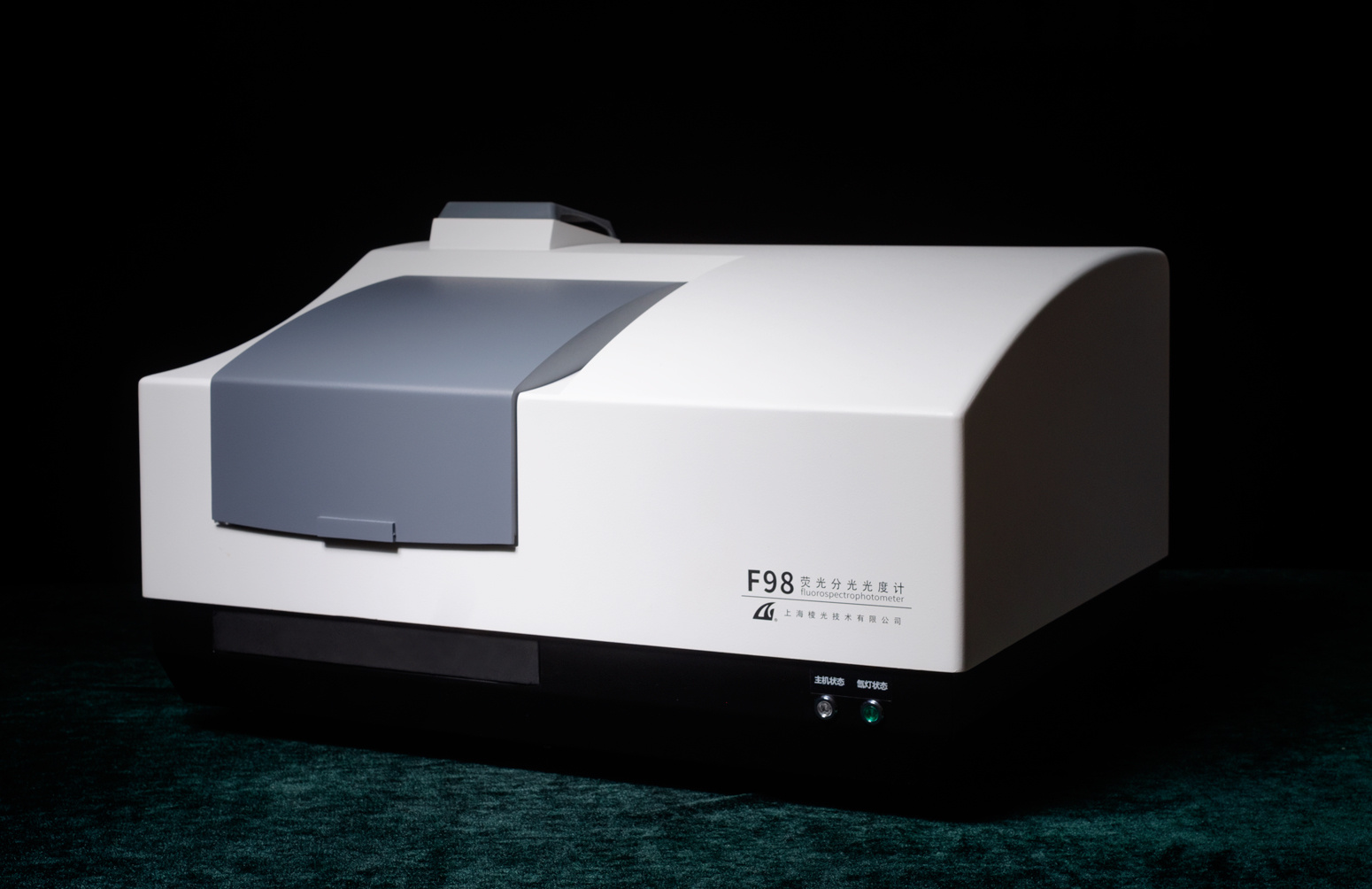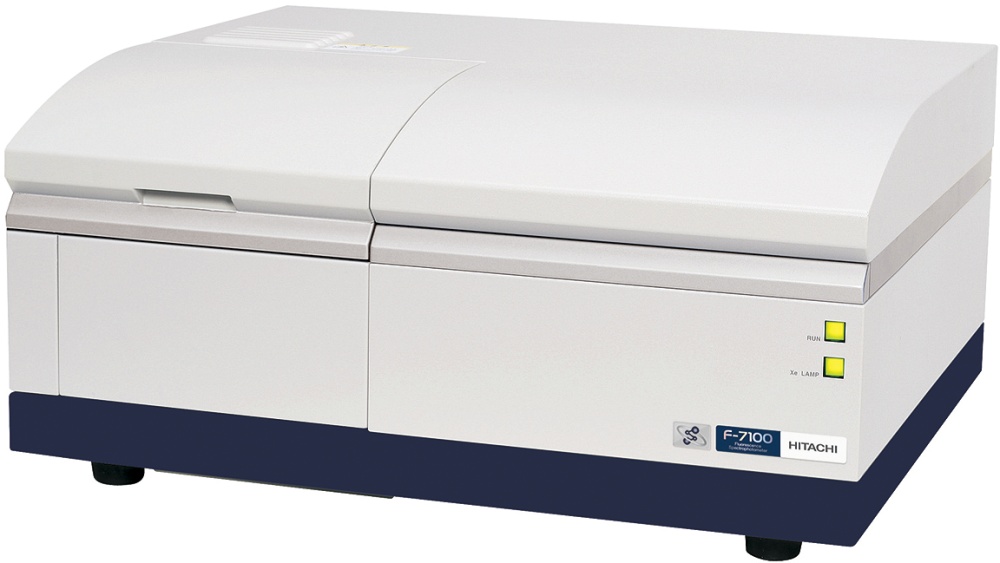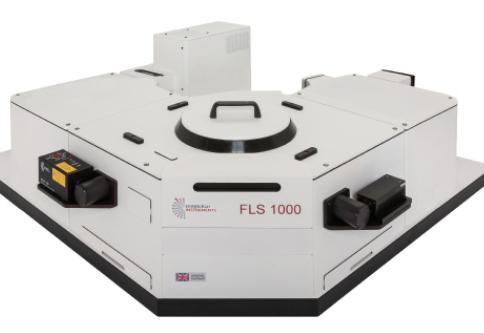方案详情
文
Deoxygenation of proteins is crucial to determination of their intrinsic lifetimes. The HORIBA Jobin Yvon Fluoro-Cube lifetime spectrofluorometer is a sensitive and important tool for investigation of the properties of proteins and changes in these proteins’ microenviroments.
方案详情

MCS and Protein Phosphorescence Introduction Tryptophan phosphorescencewithiprnotein molecules is gainingattention as a probe of protein dynamicsand structure. The tryptophan phos-phorescence lifetime, T, varies with theprotein molecule'ss local environmentand conformation. For example, t de-creases as the solvent viscosity rises.The lifetime also decreases as smallmolecules diffuse into the protein andquench tryptophan. Dr. Bruce Kerwin and colleaguesat Amgen (Thousand Oaks, CA) and theIstituto di Biofisica (Pisa, Italy) haveexamined the quenching of tryptophanemission in N-acetyl tryptophanamide(NATA, Fig. 1), human serum albumin(HSA, Fig. 2), and recombinant HSA(rHSA) using our FluoroCube lifetimespectrofluorometer. Fig. 1. Molecular structure of NATA. Experimental method Both NATA solution (5 pM, pH=8) and HSA solutions (1-20 pM) also in- ( ' D .D. B anks and B.A. Kerwin,“A deoxygenationsystem for measuring j protein phosphores- cence”, Anal. Biochem. 324(2004), 1 0 6-114;G.B. S trambini, et al., The Triplet-state Lifetimeof Indole Derivatives in Aqueous S o lution",Photochem. Photobiol. 80(2004),462-470. ) Fig. 2. Molecular structure of human serum al-bumin. cluded 1 mM Tris; NATA was held at4°C. A special deoxygenation apparatuswas built to reduce O2 levels in high-purity N2 gas to 1 ppb. Deoxygenation ofthe NATA, HSA, and rHSA solutions in aspecial cuvette was accomplished byalternately N2-purging and vacuumingon a gently swirling solution.Otherexperiments showed that at least sevencycles of deoxygenation were requiredfor optimum effect. Fig. 3. FluoroCube lifetime spectrofluorometerwith 5000XeF xenon flash lamp. Fig. 4. Oxygenated NATA lifetime decay, tri-exponential fit. Upper plot is the data and fit;lower plot is the residuals. Fig. 5. Deoxygenated NATA lifetime decay,mono-exponential fit. Upper plot is the data andfit; lower plot is the residuals. Fig. 6. Deoxygenated HSA lifetime decay, tri-exponential fit. Upper plot is the data and fit;lower plot is the residuals. Fig. 7. Deoxygenated rHSA lifetime decay, tri-exponential fit. Upper plot is the data and fit;lower plot is the residuals. Multichannel scaling (MCS)single-photon-counting spectroscopywas performed using HORIBA JobinYvon's FluoroCube fluorescence lifetimesystem (Fig. 3). The excitation sourcewas our 5000XeF broad-band (250-800nm) xenon flash lamp (pulse-width ~120 ns). The excitation monochromatorwas tuned to 294 nm with a bandpass of32 nm. The emission monochromatorwasssetto 448 nm(NATA's; room-temperature peak emission wavelength)using a 32 nm bandpass. The detectorwas a TBX-04 module. The system wascontrolled with our DataStation Hub andDAS6 software. To detect luminescence, 2000flashes from the source were required.For HSA and rHSA, 50 ps/channel and5000 channels wereused, while forNATA, 20 ps/channel and 1000 chan-nels were used. Results For the NATAlifetime decay(Figs. 4 and 5), the first 70 ps of thedata were ignored, for the excitationsource’s decay interfered. To boost theexcitation, several thousand flashes ofthe 5000XeF were recorded.Back-ground was recorded after equilibratingthe NATA with O2 and rerunning theexperiment. The first five data points of theHSA and rHSA lifetime decays (Figs. 6and 7) were discounted, owing to theinterference of the excitation prompt. Aswith the NATA, 2000 flashes of theexcitation sourceWere:rrequired tocreate the dataset. Discussion Note theobvious differencebetween the oxygenated NATA (Fig. 4),whose primary lifetime (T3 = 9.70 ps) quenched to over 500 times shorter thanthe deoxygenated NATA (T = 5.42 ms,Fig. 5). Clearly, asdemonstratedpreviously', NATA is highly sensitive tothe presence of oxygen. The difference in phosphores-cence between the deoxygenated HSAand rHSA (Fig. 5 vs. Fig. 6) is likewisestriking. Banks and Kerwin propose thatthe difference stems from slight con-tamination of the protein with copurifyingagents (e.g., fatty acids) that quench theluminescence, or possibly from varia-tions in structural flexibility near the tryp-tophan. Conclusions Deoxygenation of proteins is cru-cial to determination of their intrinsic life-times. The HORIBA Jobin Yvon Fluoro-Cube lifetime spectrofluorometer isasensitive and important tool for investi-gation of the properties of proteins andchanges in these proteins’ microenvi-roments. ( USA: HORIBA Jobin Y von Inc., 3 880 Park Avenue, Edison, N J 08 8 20-3012,Toll-Free:+1-866-jobinyvon Tel: + 1-732-494-8660, F a x:+ 1 -732-549-5125, E- m ail: info@jobinyvon.com, www.job i nyvon.com France: HORIBA Jobin Yvon S.A.S., 1 6-18, rue du Canal, 91165 Longjumeau Cedex, ) Tel:+33 (0) 1 64 54 1300, Fax:+33 (0) 1 69 09 93 19,www.jobinyvon.fr ( Japan: HORIBA Ltd., JY Optical Sa l es Dept, Higashi-Kanda, Daiji Building, 1-7-8 Hig a shi-KandaChiyoda-ku, T okyo 101-0031, T e l: +81 (0) 3 3861 8231, www.jyhoriba.jp ) Germany: +49 (0)89 462317-0 Italy: +39 0 2 57603050 UK:+44 (0) 20 8204 8142 Copyright C HORIBA Jobin Yvon; version .HORIBAExplore the future HORIBAExplore the future Deoxygenation of proteins is crucial to determination of their intrinsic lifetimes. The HORIBA Jobin Yvon Fluoro-Cube lifetime spectrofluorometer is a sensitive and important tool for investigation of the properties of proteins and changes in these proteins’ microenviroments.
确定
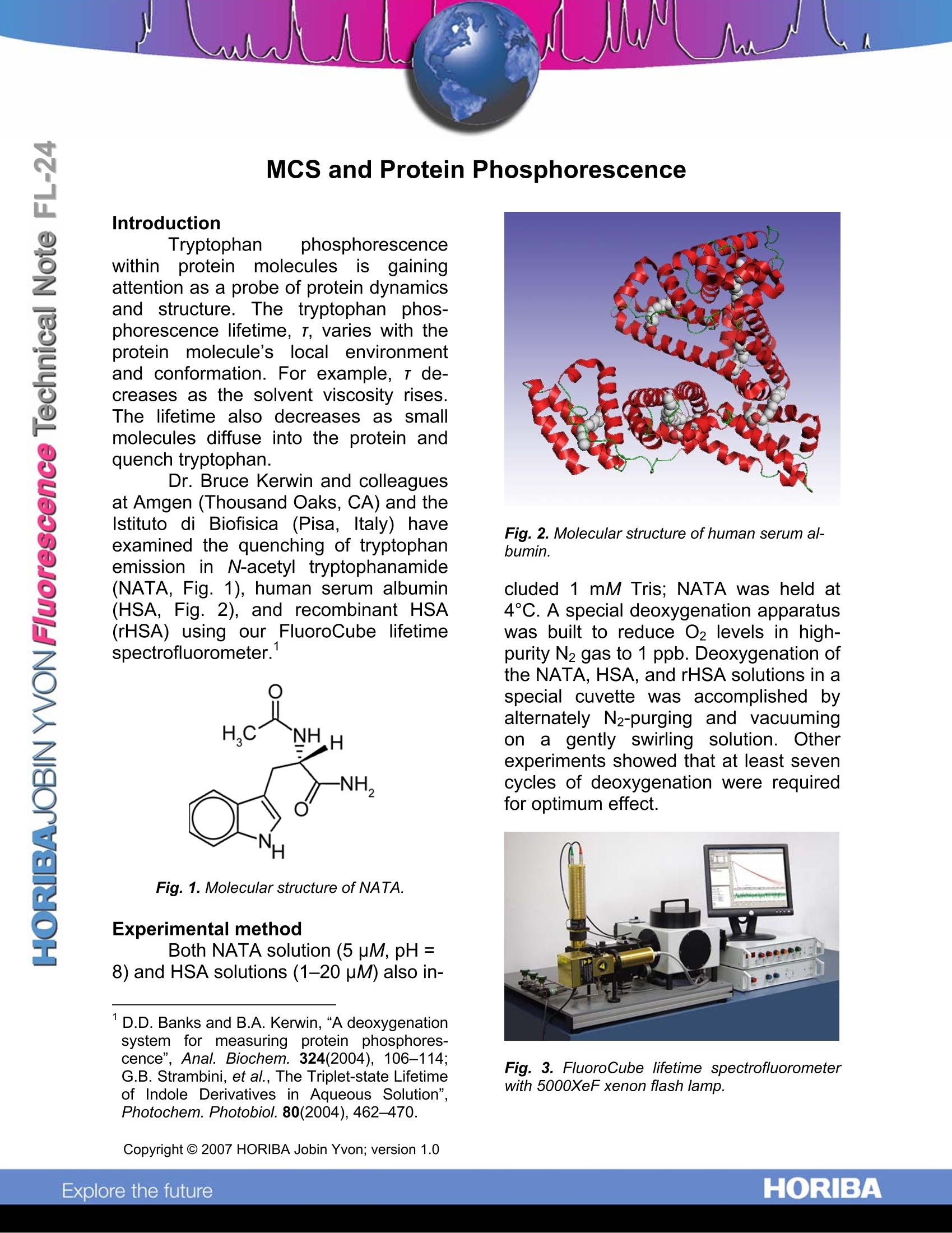



还剩2页未读,是否继续阅读?
HORIBA(中国)为您提供《NATA中寿命衰减检测方案(分子荧光光谱)》,该方案主要用于其他中寿命衰减检测,参考标准--,《NATA中寿命衰减检测方案(分子荧光光谱)》用到的仪器有HORIBA荧光寿命测试系统
推荐专场
相关方案
更多
该厂商其他方案
更多

